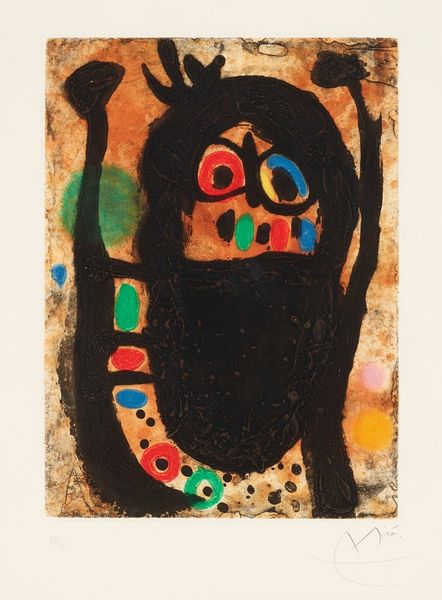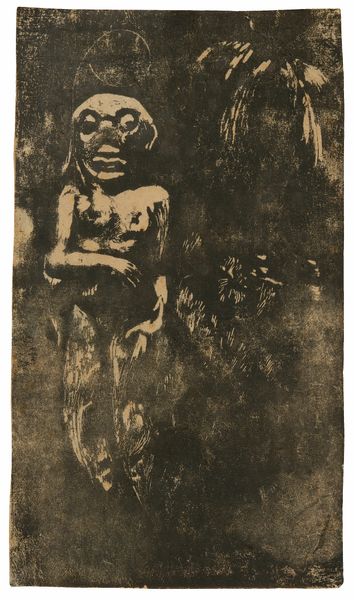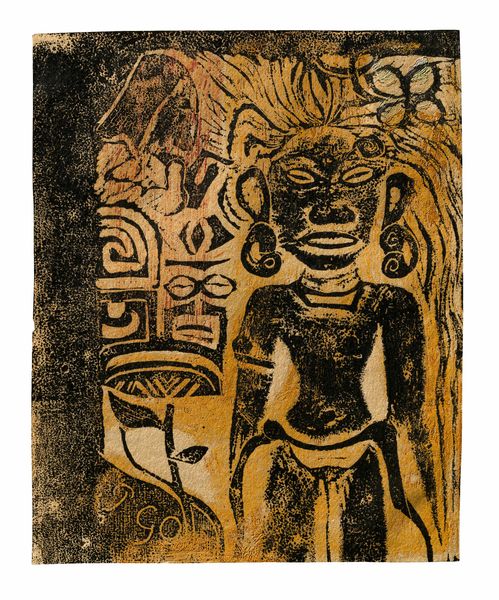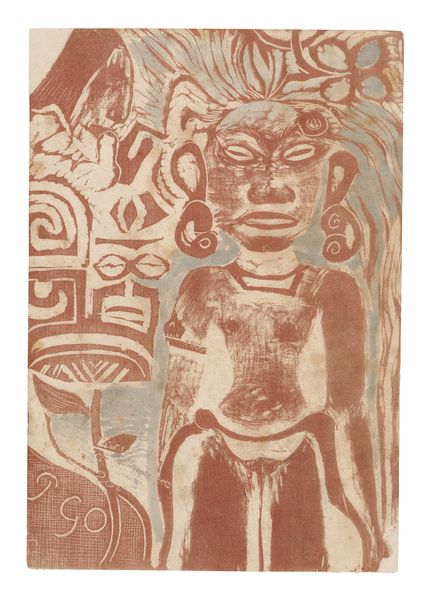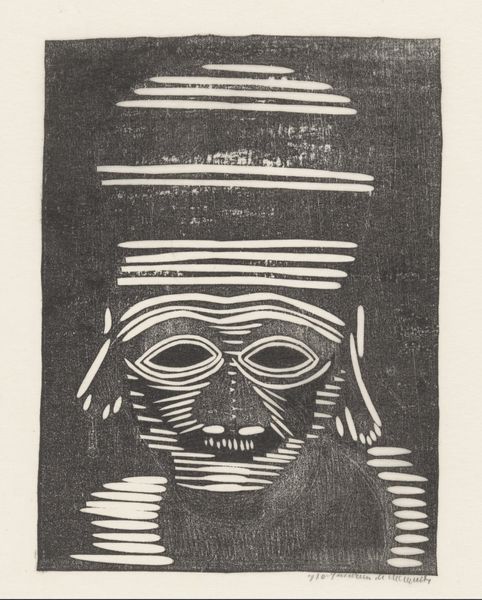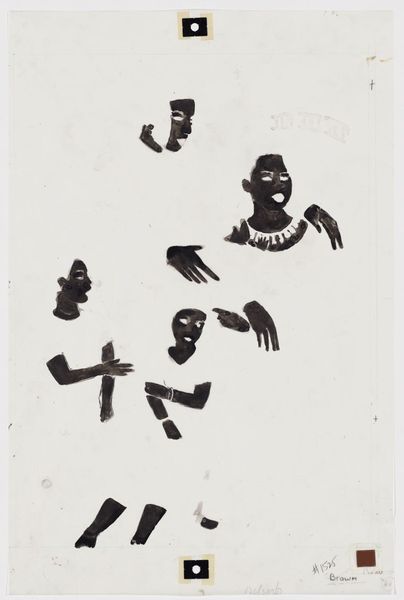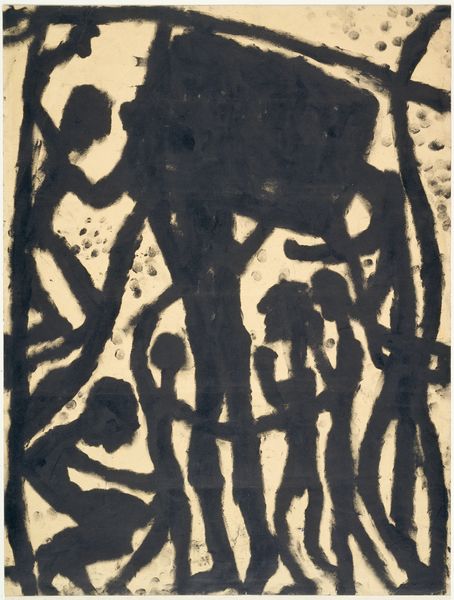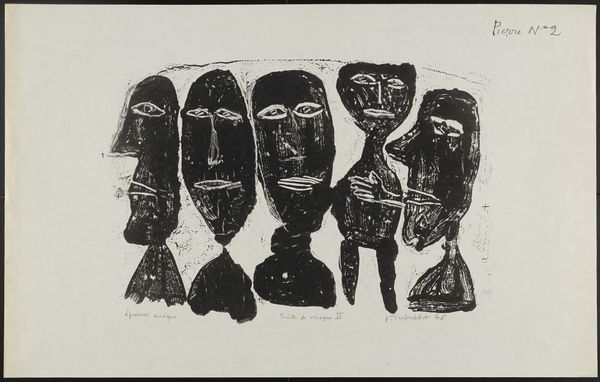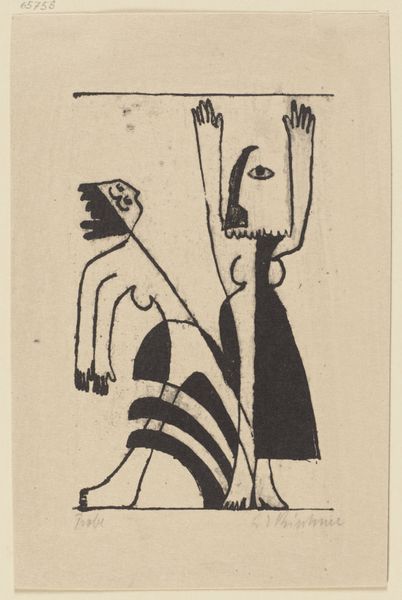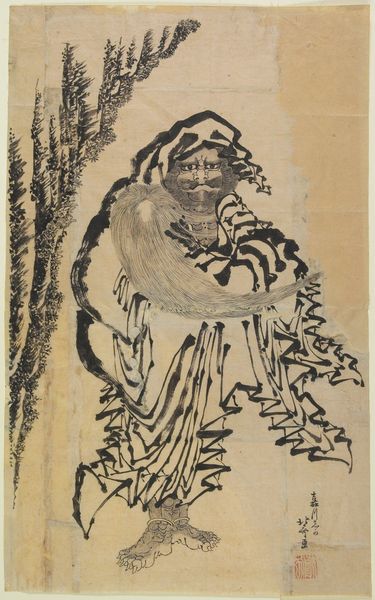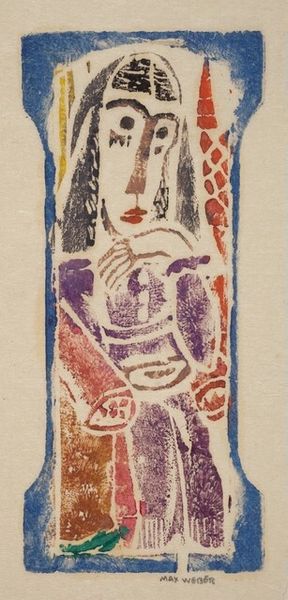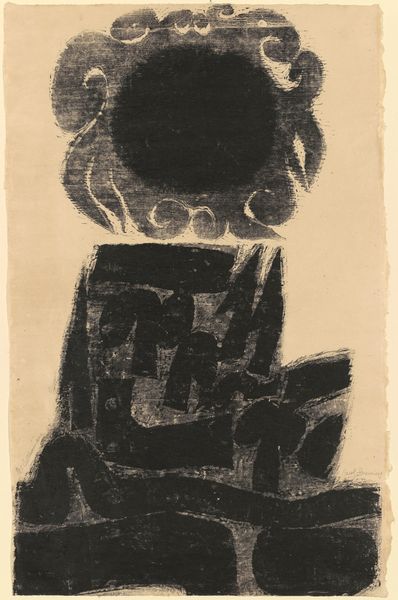
print, woodcut
# print
#
caricature
#
figuration
#
linocut print
#
woodcut
#
line
Dimensions: 346 × 200 mm (image); 369 × 263 mm (sheet)
Copyright: Public Domain
Editor: Here we have Paul Gauguin's "Hina," made sometime between 1891 and 1893. It looks like a woodcut or linocut print. It's strikingly graphic, and the figure feels very monumental. What are your thoughts on it? Curator: Gauguin's fascination with Polynesian culture is obvious, but it's crucial to unpack that gaze. How do we reconcile his appropriation of indigenous imagery with the power dynamics of colonialism? Consider how his representation of Hina, a Polynesian goddess, might perpetuate or challenge existing stereotypes. Editor: That's interesting, I hadn't considered that. The figure appears almost mask-like to me. Is there something to be said about his choice of presenting her like this? Curator: Precisely. Think about the symbolic weight of masks in various cultures. What could this choice suggest about Gauguin's understanding – or misunderstanding – of Polynesian spiritual practices? And more broadly, how can we decolonize our interpretations of art from formerly colonized places? Editor: It definitely puts a different light on the piece when thinking of Gauguin as an outsider interpreting the culture he experienced in Tahiti. Thank you for your perspective! Curator: Of course. And remember, analyzing art is rarely about finding definitive answers, but engaging in critical dialogue. Editor: That is a point well taken.
Comments
No comments
Be the first to comment and join the conversation on the ultimate creative platform.

